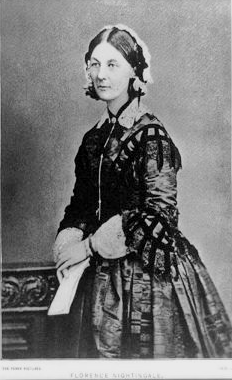The Invisible Statistician

As a statistician I am often asked, "What do you do?" My explanation often surprises people, who have not realised the impact of statisticians on our world today. Statisticians are the invisible profession, having an impact behind the scenes, but rarely visible to the public. This is particularly the case in health.
I am often mindful of one of the first statisticians working in the area of public health in the nineteenth century. She used carefully collected data to better understand issues and had immense influence on government policy. Her contributions were recognised by her being the first female Fellow of the Royal Statistical Society of London, the world's first statistical society. Her work included collaborating with mathematical statisticians, as she realised that analysis of data was a mathematical process. However, today Florence Nightingale is largely remembered only for her work as a nurse, not for her statistical contributions.
The impact of statisticians and mathematicians upon health research continues. A prime example is the understanding of cancer. In the early 1950s, two medical statisticians, Richard Doll and Peter Armitage, developed a multistage model for cancer, in their attempt to understand the epidemiology of the disease. This model suggested that several genetic mutations are required to cause a malignancy, a profound idea given that it was made before the discovery of DNA. Subsequent research has confirmed the biological basis of this model and it is the centre of much modern cancer treatment.
The role of statisticians in health is growing, sometimes under the name of "bioinformatics". A major research area is molecular genetics - understanding just how the body's DNA, and changes to it, affects outcomes. This research uses established statistical techniques of studying pedigrees, augmented by masses of data from DNA microarrays - clever devices fabricated using microchip technology and which simultaneously test for thousands of genetic markers. The sheer volume of data has driven the development of innovative statistical methods resulting in newly identified human genes being announced almost daily.
Good health planning also requires statistics. Allocating limited resources efficiently requires analysing data from hospitals and understanding where patients will come from and what services they will need. This links to many other areas such as demographics to understand how the population is changing and optimisation methods to determine the best planning solutions.
Data Analysis Australia consults in a range of these areas. For example, Data Analysis Australia pioneered the understanding of how patients choose hospitals in Perth so that future hospitals may be sited more appropriately. More recently we have assisted a range of clients where health statistics is part of litigation.
For further information, please Contact Us.
February 2008
